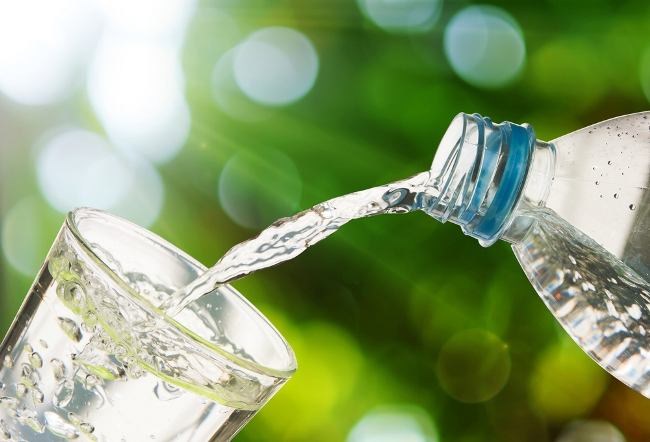Baby, it’s hot outside. Whether you work outdoors or spend more time at the pool on the weekends, the high temperatures increase your risk of dehydration.
The body’s cells, tissues, and organs, including the heart, all require water. You lose water daily when you breathe, sweat, and use the restroom. Water loss happens more quickly when the weather’s hot and you’re physically active.
Staying hydrated is about much more than simply drinking fluids. Check out these five facts to help keep you and your family well-hydrated this summer.
1. Thirst isn’t always the best indicator of hydration.
While thirst can signal that your body needs more water, it may not do so until you’re already in the early stages of dehydration.
That’s why it’s important to drink fluids even when you don’t feel thirsty. Don’t wait to simply quench your thirst.
Once you’re dehydrated, you may experience the following:
- Decreased urine output
- Dark urine
- Dry mouth
- Extreme thirst
- Headache
- Dizziness or confusion
- Muscle cramps
2. Certain people are at higher risk of becoming dehydrated.
Everyone is at higher risk of dehydration when it’s hot outside or when exercising, particularly at a high intensity. Older adults are also at a higher risk because the brain’s ability to sense when the body needs more water lessens as you age.
You may also need to increase the amount of water you’re drinking if you:
- Have certain medical conditions, including kidney stones, bladder infection, vomiting, diarrhea or fever
- Are you pregnant or breastfeeding
- Are you trying to lose weight
3. Staying hydrated isn’t just about drinking water.
While drinking water is the best way to replenish your body’s water levels, you can also up your fluid levels by drinking other beverages and eating water-rich foods.
Juice, milk, and even caffeinated beverages all contribute to your daily water intake. Limit your caffeine intake when it’s particularly hot outside, though, because caffeine can increase your need to urinate, which causes water loss.
You can also replenish your body’s water levels through the foods you eat. Many fruits and vegetables have a high water content, making them good options to help your body fuel up and stay hydrated. Certain types of produce include particularly high levels including:
Fruits
- Watermelon
- Berries
- Grapefruit
- Cantaloupe
- Peaches
- Pineapple
- Oranges
Vegetables
- Cucumber
- Lettuce
- Zucchini
- Celery
- Tomatoes
- Peppers
- Broccoli
- Cauliflower
The best news is that most of these fruits and veggies are in season during the summer, so eat up!
4. You don’t necessarily need eight glasses of water a day.
You may have heard that rule of thumb — you need six to eight 8-ounce glasses of water daily to stay hydrated. But different people need different amounts of water.
The amount of water your body needs will vary depending on a number of factors, such as:
- Your bodyweight
- How active you are
- How fast your metabolism is
- Where you live (In the heat of the South, we need more fluids!)
- The temperature outside
- Your health
- Your alcohol intake
You can’t accurately gauge whether you’re hydrated by whether you drink a specific amount of water each day. To better measure whether you’re well-hydrated, look at the color of your urine. When you’re hydrated, your urine should be pale yellow or almost clear. If it’s a darker color or has an odor, drink up to replenish your body’s water.
5. Like any other habit, training yourself to stay hydrated is possible.
If you have trouble remembering to drink fluids, schedule water breaks. Try drinking water when you get up in the morning, eat a meal or snack, and before bedtime. You can also drink water every hour on the hour.
Don’t like plain water? Try carbonated or calorie-free flavored water, or add lemon, lime, orange, or berries to your water.
Severe dehydration can be life-threatening. If you experience the symptoms of dehydration, seek prompt medical attention. Erlanger Health System is the region’s only Level I Trauma Center and Comprehensive Regional Pediatric Center (CRPC), the highest level of pediatric trauma care. Erlanger also has emergency care available in four locations, Erlanger Baroness Hosptial (Downtown Chattanooga), Erlanger East Hosptial (Gunbarrel Rd. Chattanooga), Erlanger North Hospital (Morrison Springs Rd. Chattanooga), Erlanger Bledsoe Hosptial (Pikeville, TN), and Erlanger Western Carolina (Murphy, TN).







